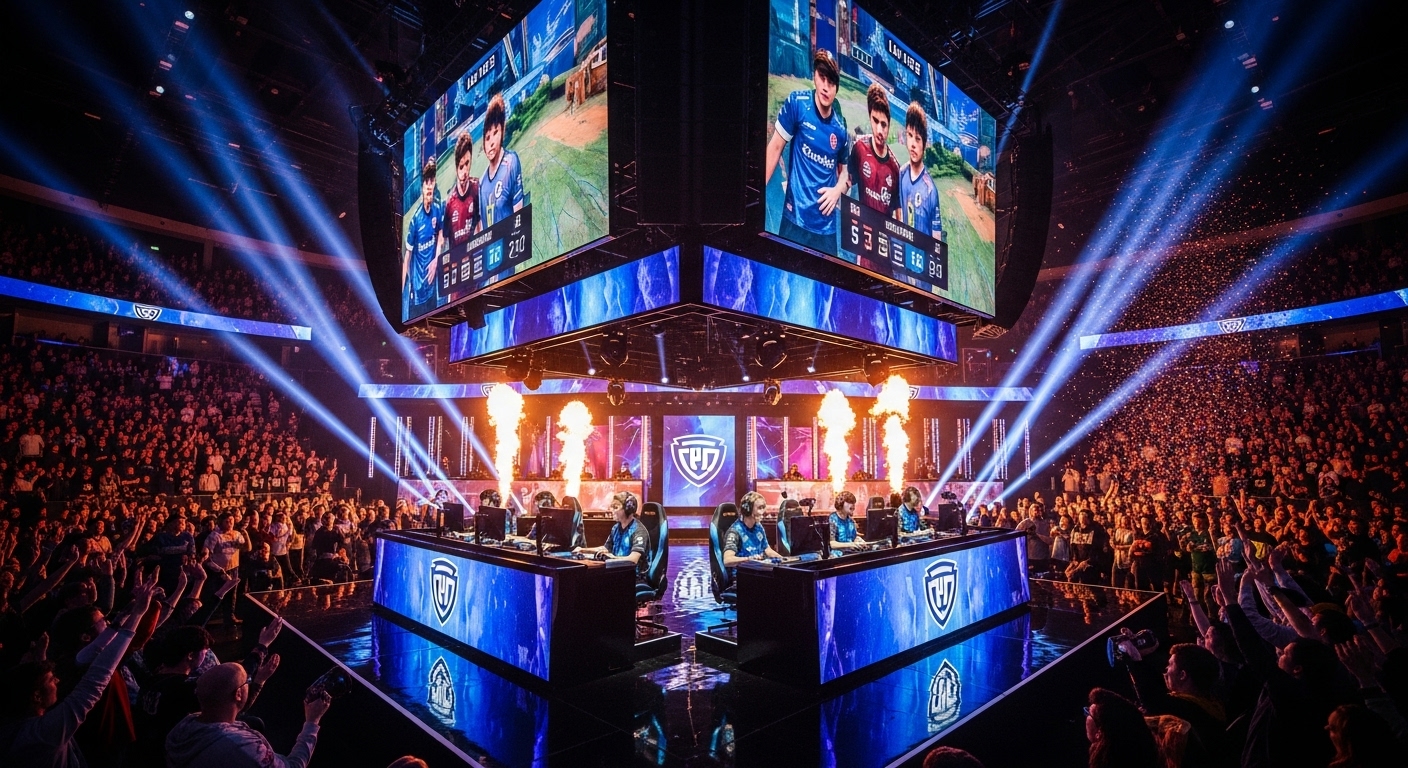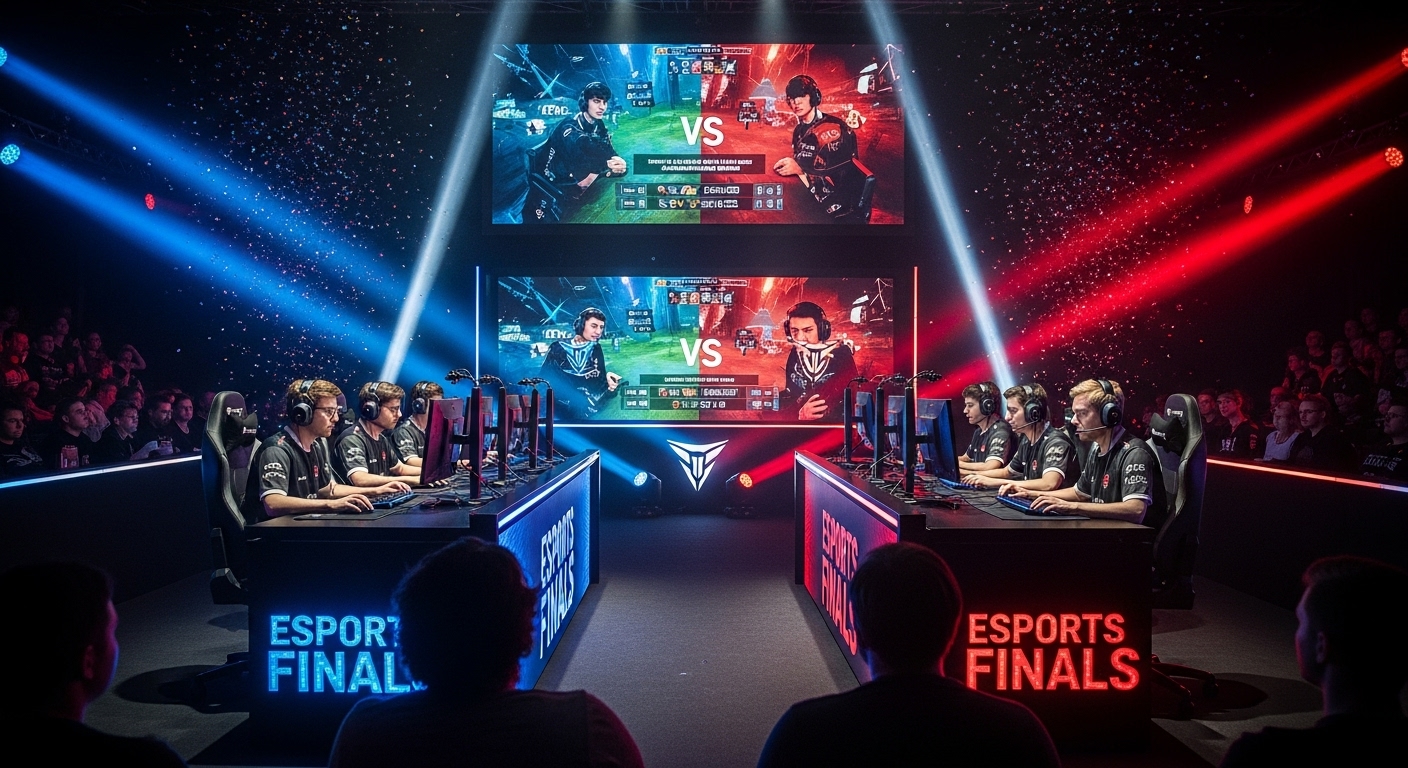Esports, or competitive gaming, has grown from a niche hobby into a global entertainment phenomenon. What began as small-scale competitions held in local gaming centers has now exploded into a multi-billion-dollar industry, complete with professional leagues, sponsorships, global fanbases, and prestigious tournaments. As esports continues to attract millions of viewers and players worldwide, it’s reshaping the way we think about entertainment, sports, and culture.
In this blog post, we will explore the history, growth, and future of esports, and delve into what makes this industry so compelling for players, fans, and sponsors alike.
What is Esports?
At its core, esports refers to organized, multiplayer video game competitions, where professional players or teams compete for prizes, recognition, and often sponsorships. Esports encompasses a wide range of video games, from first-person shooters like Counter-Strike: Global Offensive to battle arena games such as League of Legends, multiplayer online battle games like Dota 2, and even mobile games like PUBG Mobile.
Esports events are typically broadcast online, with millions of viewers tuning in to watch the action unfold in real time. Unlike traditional sports, esports is played in digital arenas, and players use specialized gaming setups, including high-end PCs, consoles, and peripherals to compete. The rise of platforms like Twitch and YouTube has made it easier than ever for fans to watch, support, and interact with players and teams.
The Origins of Esports
The roots of esports can be traced back to the early days of multiplayer gaming. In the 1990s, games like Doom and Warcraft allowed players to connect over local area networks (LANs), setting the stage for competitive gaming. Early tournaments were informal and localized, often hosted by gaming communities or small gaming centers.
The first major international esports tournament was the Red Annihilation tournament held in 1997, where players competed in Quake. It was one of the first examples of a large-scale event that attracted a global audience, but esports as a career was still far from mainstream.
In the 2000s, competitive gaming began to gain more visibility, particularly with the rise of online gaming. The World Cyber Games (WCG), founded in 2000, played a pivotal role in bringing esports into the international spotlight by organizing events that allowed players from different countries to compete. The popularity of games like StarCraft, Warcraft III, and Counter-Strike helped to establish a foundation for professional gaming leagues and tournaments.
The Key Drivers Behind Esports’ Explosive Growth
Several factors have contributed to the explosive growth of esports over the past decade. Let’s take a look at the key drivers behind the industry’s rise.
1. Advancements in Technology
One of the primary catalysts for the growth of esports has been the continuous advancement of gaming technology. The rise of high-performance gaming PCs, consoles, and mobile devices has made it easier for players to access competitive gaming, while improved internet infrastructure has made online competitions more accessible to a global audience.
Additionally, platforms like Twitch, YouTube Gaming, and Facebook Gaming have revolutionized the way esports content is consumed. The ability to stream live events and watch high-quality content on demand has helped build massive global audiences. This accessibility, coupled with the growing capabilities of streaming services, has propelled esports into the mainstream.
2. Increased Investment from Corporations
As esports’ popularity has surged, it has attracted significant investment from major corporations. Companies like Intel, Coca-Cola, Nike, and Red Bull now sponsor esports events, teams, and players, helping to raise the profile of esports and increase its legitimacy. These sponsorships not only provide much-needed funding for tournaments and teams but also allow brands to tap into a massive, engaged audience of gamers and fans.
Moreover, the connection between traditional sports and esports is becoming increasingly evident. NBA teams like the Philadelphia 76ers and the Los Angeles Lakers have invested in esports franchises, while high-profile celebrities like Drake and Shaquille O’Neal have also joined the esports world by backing teams or organizing events. This convergence between traditional sports and esports is further proof of the growing importance of competitive gaming in the world of entertainment.
3. The Rise of Streaming Platforms
Streaming platforms have played a pivotal role in the growth of esports. Twitch, in particular, has been a game-changer. Launched in 2011, the platform quickly became the go-to place for gamers to broadcast their gameplay and interact with viewers. Twitch allows players to connect with fans on a personal level, building large communities around their channels.
Esports tournaments are now broadcast live on these platforms, giving fans the chance to watch top-tier competitions from the comfort of their own homes. This has helped democratize access to esports content, as anyone with an internet connection can tune into a tournament or stream. The rise of live-streaming platforms has also allowed players to monetize their gameplay, turning some streamers into full-time professionals and influencers with millions of followers.
4. Mobile Gaming and Esports
While PC and console gaming have traditionally dominated esports, mobile gaming has become a significant part of the industry, particularly in emerging markets. Games like PUBG Mobile, Clash Royale, and Free Fire have helped bring competitive gaming to a broader audience. In regions like Southeast Asia, Latin America, and India, where mobile phones are more accessible than gaming PCs or consoles, mobile esports has exploded in popularity.
The rise of mobile esports has created new opportunities for players and organizers to host tournaments, often with substantial prize money. Games like PUBG Mobile and Free Fire have global esports leagues, and the prize pools for mobile competitions are rapidly growing. With mobile technology continuing to advance, it’s likely that mobile esports will play an even larger role in the future of competitive gaming.
Popular Esports Games and Their Tournaments
As esports continues to expand, certain games have emerged as the cornerstone of the industry. These games feature large, dedicated player bases and host major international tournaments.
1. League of Legends (LoL)
League of Legends, developed by Riot Games, is perhaps the most well-known and widely played esports title in the world. As a multiplayer online battle arena (MOBA) game, it features teams of five players who compete to destroy the enemy team’s Nexus, located in their base.
The League of Legends World Championship is one of the largest esports events in the world, attracting millions of viewers each year. With a prize pool that often exceeds $2 million, the competition brings together the best teams from around the globe.
2. Dota 2
Dota 2, created by Valve Corporation, is another heavy hitter in the esports world. Like League of Legends, it is a MOBA game where teams of players work together to destroy the enemy’s base. However, Dota 2 is known for its higher level of complexity and strategic depth. The International, Dota 2’s flagship tournament, is famous for its massive prize pool, often reaching over $30 million.
The International is one of the most prestigious tournaments in esports, drawing millions of viewers and representing the pinnacle of competitive Dota 2.
3. Counter-Strike: Global Offensive (CS:GO)
Counter-Strike: Global Offensive (CS:GO) is a tactical first-person shooter (FPS) that has been a staple of the esports scene since its release in 2012. The game pits two teams against each other, with one side trying to plant a bomb while the other team works to defuse it.
The CS:GO Major Championships are some of the most significant events in competitive FPS gaming. These tournaments attract millions of viewers and showcase the highest level of strategy, reflexes, and coordination.
4. Fortnite
Fortnite is a battle royale game that took the world by storm in 2017. Developed by Epic Games, Fortnite blends shooting, building, and exploration in a unique way, making it a favorite among casual and competitive players alike. The Fortnite World Cup in 2019 offered a prize pool of $30 million, solidifying the game’s position as a major player in the esports scene.
The game’s accessibility, frequent updates, and free-to-play model have contributed to its massive success, and Fortnite continues to dominate the esports landscape.
The Future of Esports
As esports continues to grow, the future looks incredibly promising. Some of the key trends shaping the future of esports include:
1. Greater Integration with Traditional Sports
Esports and traditional sports are increasingly intertwined. More professional sports teams and organizations are investing in esports, and there’s growing talk of esports being included in major sporting events like the Olympics. This convergence will likely continue, with more sports organizations entering the esports space and more esports players being recognized as professional athletes.
2. The Rise of Virtual and Augmented Reality
Virtual reality (VR) and augmented reality (AR) have the potential to revolutionize esports. As these technologies improve, they could offer players and fans new ways to experience competitive gaming. VR esports could introduce new types of games and provide an immersive viewing experience for fans, while AR could enhance the way games are played and viewed.
3. Global Expansion
Esports is poised for continued global growth, particularly in emerging markets. Countries in Africa, the Middle East, and parts of Asia are seeing increased investment in esports infrastructure, which will help make competitive gaming more accessible to new audiences. With mobile gaming continuing to rise in popularity, esports will likely experience even greater expansion in regions where high-end gaming PCs or consoles are less common.



